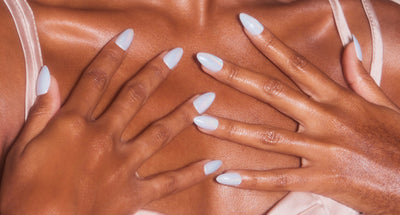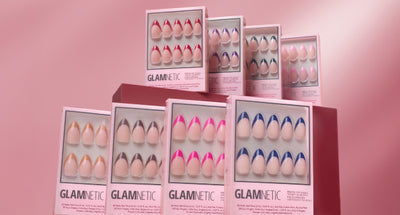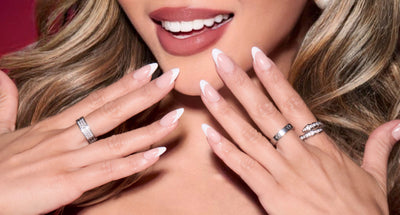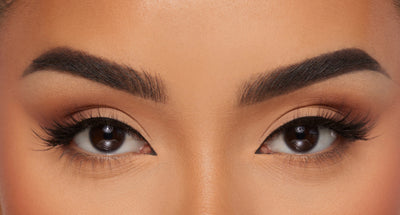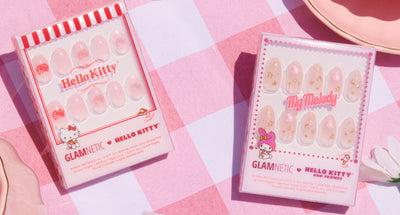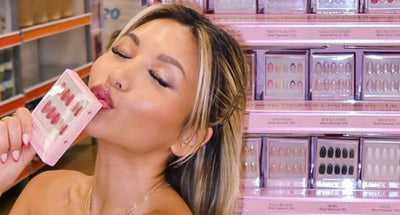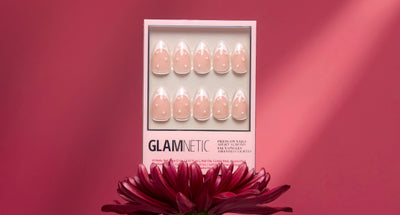When Were Fake Eyelashes Invented: The History of False Eyelashes

False eyelashes were a symbol of prestige and royalty for centuries before they became a luxury that we wear now for cosmetic reasons. Over the years, lashes have changed the way they look, the way they’re applied, and their symbolism.
It has often been said that the eyes are the windows to the soul. Why is this, and why is the fascination with big eyes and long, lustrous lashes?

The Origin of False Eyelashes
False lashes are nothing new, but in the beginning, false eyelashes were nothing like the long, fluttery lashes that celebrities flaunt today. Let’s take a trip back in time to discover the origin of false lashes and where they’ve evolved to today.
Ancient Egypt
In ancient Egypt (3500-2500 B.C.), both men and women reached for lash styling tools such as ointments, kohl, and malachite to darken their lashes. This darkening of their lashes also acted as protection from the sun’s rays on their eyes.
Years later, in 753 B.C., the Romans believed their lashes were a sign of morality. They utilized burnt cork and coal to darken their lashes. This lash darkening exhibited social status and beauty.
The Middle Ages
The Medieval Times brought about the worshipping of the forehead. Yep, people actually believed that their forehead was the most erotic feature on a woman’s face. They aimed to pluck their eyelashes and eyebrows in an attempt to show more skin. Hot or not?
This aim to bare all was dangerous, though. Eyebrows and eyelashes serve an important purpose to discourage dust and dirt from entering the eyes. Bacteria can enter the eye area more easily without this protection. So, don’t pluck your lashes, ladies.
The Lashes of the Elizabethan Era
Queen Elizabeth made an unintentional fashion statement with her naturally red hair, and women quickly followed this trend.
Women were soon dyeing their lashes red in private by using toxic substances. This toxicity resulted in hair loss and illness.
The Lashes of the Victorian Era
Makeup became more popular during the Victorian era. Eugene Rimmel, the perfumer of Queen Victoria, first developed mascara. Rimmel first began his career in 1834 alongside his father by becoming an expert in fragrances.
In the 1850s, the Rimmel brand became one of the first global hygiene and cosmetics brands.
The non-toxic ingredients of the mascara consisted of Vaseline jelly and fine coal dust, and it became prevalent among women. It was the first commercial non-toxic mascara to be invented.
Today, all of these years later, the Rimmel brand still exists.
The Early 1900s Lashes
Anna Taylor, a Canadian inventor, patented the first artificial lashes on June 6, 1911. These lashes were believed to have been made from human hair. They were strip lashes that used glue to adhere to the lash line. Women loved these new false lashes.
An American film director, David Griffith, is falsely credited with the invention of lashes in 1916. This accusation happened because he told a movie wigmaker to use hair to embellish silent actress Seena Owen’s eyes during the making of the film Intolerance. Yep, lashes even made their quiet statement in silent movies.
The Lashes of the 1930s
The eyelash curler was invented in 1931 by William McDonell of Kurlash. His invention looked similar to the lash curlers of today.
In 1933 Maybelline sold a small cosmetic package in drugstores for ten cents. It contained mascara and an eyelash curler. Women sought to purchase these packages so often that drugstores often sold out of the product.
The Lashes of the 40s and 50s
Waterproof mascara became popular during these years, and Revlon released their first spiral tip wand mascara in 1958. This mascara was the first automatic mascara made without turpentine.
Turpentine is a highly toxic ingredient containing lead kohl and aniline, a hair dye ingredient. These ingredients are known to have caused blindness in many people (Talk about killer lashes!).
The Groovy 1960s and 70s Lashes
Mauve and dark green mascaras became popular colored mascaras in 1960. Revlon also introduced fiber lash mascara in 1963, called Fabulash mascara.
Thick, dark, spidery lashes were made famous by supermodel Twiggy in the 60s. False lash sets called Twiggy Lashes were sold by Yardley of London, giving hope to millions of women that their eyes could look like the model’s famous peepers.
Then, in the 70s, Maybelline Great Lash first released water-based mascara in 1971. This mascara has gone on to be one of Maybelline’s top sellers. This mascara has earned the Allure Reader’s Choice Award for 20 years in a row.
Lashes of the 1980s and 90s
MAC was founded in 1984 in Toronto, giving way to equipping professionals with high-quality cosmetics. Bright, popping colors in pink, orange, and green were trendy in the 80s and 90s in both makeup and clothing.
Max Factor boasted a no-color mascara in 1988, and hair mascara became popular. That’s right; people painted their hair with brightly colored mascara.

Modern Day Lashes: The 2000s and Beyond
Lash extensions were developed in the early 2000s in Korea and became increasingly popular by celebrities in 2004. These lashes consisted of the lash extension types we see today.
Fine hairs are glued onto your natural lashes with professional-grade lash glue. Lashes can be customized to fit the client’s style and preference. Lash extensions last about two to three weeks before you need a lash refill.
Refills are performed to replace individual lashes that have fallen out due to natural shedding. Your lashes are shed completely every six weeks. As your lashes fall out, the extension falls out with it. This shedding is natural and requires a refill to keep the lashes looking long and voluptuous.
In 2001, a medicated eye drop was invented to help patients with glaucoma. After the medication’s use, patients saw a dramatic lengthening and darkening of their natural lashes. The ingredients of this medication were further studied and resulted in the lash lengthening serum Latisse.
Glamnetic Magnetic Lashes
Magnetic lashes were patented in 2014 by Katy Stoka. Magnetic lashes are false strip lashes with tiny magnets attached to them. These little magnets adhere to a magnetic eyeliner drawn on the upper lash line just like a regular eyeliner.
After the liner is applied, the lash band is laid on top to make the magnetic connection. Magnetic lashes form a solid magnetic bond to the magnetic liner, offering all-day waterproof wear. They’re like little pieces of magic!
Magnetic lashes and other types of false lashes offer you the ability to skip the mascara altogether. Fake lashes are dark, long, and fluffy, so wearers can skip the mascara.
Some people opt to wear a thin coat of mascara while wearing fake lashes, and that is ok, as long as the mascara is applied in a very thin layer. The point is not to weigh the lashes down or cause clumping of the natural lashes with the false ones.
Glamnetic launched in July 2019, when founder Ann McFerran decided to develop a solution to traditional messy falsies that required glue. Her passion for lashes brought Glamnetic magnetic lashes to birth, and they have set the standard for magnetic lashes today.
Glamnetic magnetic lashes offer natural styles and long, fluffy sets. The magnetic liners glide across the eyes smoothly for an effortless finish.

To Wrap It Up
False eyelashes have come a long way over the years. The Egyptians smudged kohl and oils onto the eyes, while women in the Middle Ages plucked all hairs from their eyes and face.
It seems that eyelashes have been an obsession throughout history. Today falsies are a way of expression and are worn primarily for fashion and fun. Magnetic lashes are considered the safest form of false lashes today.
Snag a pair of Glamnetic magnetic lashes and gaze into the mirror. See what the buzz is about. Maybe the eyes really are the windows to the soul.
Sources:
Fact check: Story of false eyelashes and London prostitute isn't true | USA Today
Automatic Mascara | Cosmetics and Skin
Mascara Ingredients, Waterproof Mascara, History of Mascara, and More | WebMD
Automatic Mascara | Cosmetics and Skin
How Eyelash Brand Glamnetic Became A Multimillion-Dollar Beauty Startup (In One Year) | Forbes



